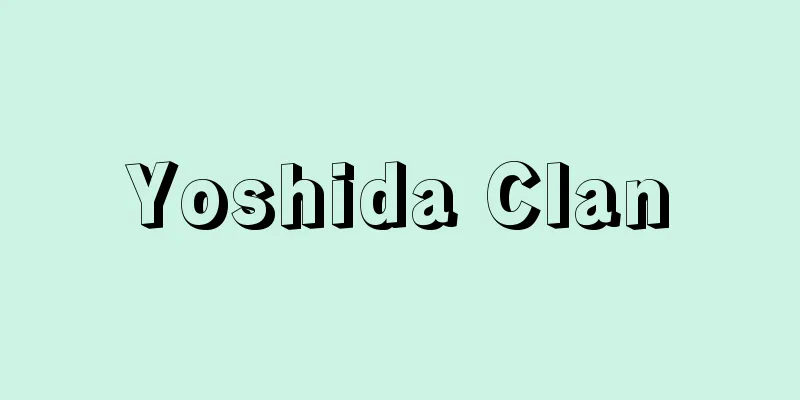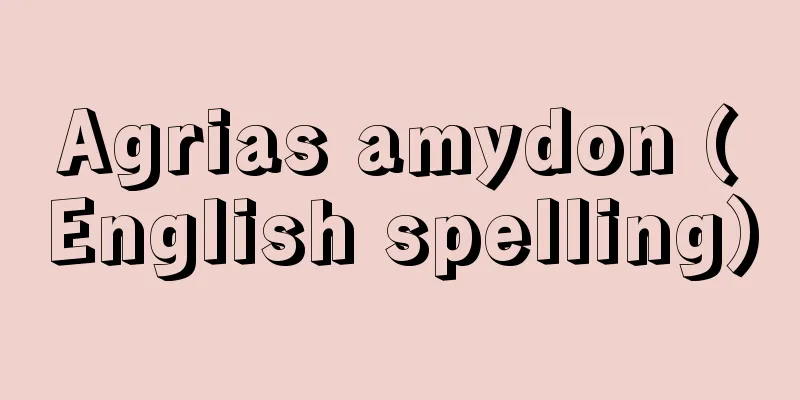Artificial flowers - zouka

|
Artificial flowers are made based on natural flowers. Decorative flowers. They are made from materials such as cloth, paper, thread, leather, vinyl liquid, plastic, and metal to imitate the flowers, leaves, branches, stems, and fruits of plants. There are general artificial flowers for interior decoration and festival decoration, and artificial flowers for clothing accessories. [Kumiko Ichikawa] historyThe oldest known artificial flowers are found among the remains of the Aegean culture, which flourished in the Mediterranean around 2700 BC. In ancient Egypt around 1600 BC, they were used as ornaments, and one of the finest examples is a small gold five-petal flower that was used as an ornament on the crown worn by Khnumet, the daughter of Amenemhat II. This is a gorgeous piece that shines with gold. In ancient Greece and Rome, it was further refined, and magnificent and intricate pieces were made. In ancient Rome, heroes who had distinguished themselves in war were given a crown of flowers called a corona to celebrate their military achievements. At banquets, flowers were tied with string or garlands were made and placed on the head, creating a luxurious atmosphere that was called the "corona of revelry," and artificial flowers were used exclusively for this purpose. During the Renaissance, the technology further advanced, and the delicate realism of the flowers made them indistinguishable from real flowers, and they competed in high society among the aristocracy for their elegant colors and rich hues. In the 18th century, gorgeous artificial flowers made from fabric became widely used among the general public, and the technology improved significantly. In the early modern period, artificial flowers began to be used in bridal bouquets, which had previously been made only with fresh flowers, and this gave rise to a trend of always attaching artificial flowers to corsages, hats for women and girls, and evening gowns. In modern times, with a new sensibility, artificial flowers that match the colors of clothing, or colors that could only be achieved with artificial flowers, are popular, but at the same time, the number of cultivated varieties of flowers has increased, and the old-fashioned method of formally decorating with fresh flowers is also gaining popularity. In Japan, there is a handicraft called Sensai, which is a type of artificial flower. Flower shapes are cut out of silk cloth, paper, and gold leaf, and pasted on folding screens and other items as decorations. Sensai is one of the oldest examples preserved in the Shosoin Repository. Full-scale artificial flowers were developed during the Edo period, when they were called saikumono, and items with a uniquely Japanese beauty, such as thread flowers and fabric flowers, were created. By the end of the Edo period, official artificial flower makers at the Imperial Court and private professional artificial flower makers also appeared. They literally added flowers to the seasons of Edo, such as the tachibana (citrus fruit) at Ukon and the cherry blossoms at Sakon for Hina dolls, hair ornaments for dolls, decorations for sugegasa (traditional Japanese hats), and irises for seasonal festivals. Edo-style artificial flowers were widely used for wedding decorations such as Horai (celebratory items decorated with pine, bamboo, plum, cranes and turtles, modeled after the imaginary Chinese mountain Mount Horai) and Takasago (celebratory items decorated with pine trees, a general and an old woman, cranes and turtles), and artificial flower shops sprang up one after another throughout Edo. Also, "flower hairpins" (hairpins decorated with artificial flowers) became a specialty of Edo. However, the artificial flowers seen today only came into existence after European-style women's clothing became popular in the Meiji period and later. [Kumiko Ichikawa] kindsBroadly speaking, artificial flowers can be divided into realistic ones that are made to resemble the real thing, creative ones that are made without being particular about the actual flower, and neutral ones that are somewhere in between and that incorporate the artist's own creativity. A typical example of realistic artificial flowers is the Hong Kong flower, which is made from plastic and appeared after the Second World War. It is so named because it is mainly produced in Shantou and Hong Kong in the eastern part of Guangdong Province, China. There are many types of flowers, they are less likely to change shape or discolor, and dirt can be washed off, so they are still very popular today. If we classify them by material alone, there are fabric flowers made from cloth, ribbon flowers made from elastic ribbons, artificial flowers made from liquid vinyl, bead flowers made from wire threaded through beads, lace flowers made from needlepoint lace (lace sewn using sewing needles based on buttonhole stitches), paper flowers made from washi paper, kibanshi (a general term for handmade washi paper), crepe paper, apple flowers made from apples, bread flowers made by crushing bread into a clay-like material and kneading it, leather flowers made from leather, and the list goes on and on, and it seems there are still more new materials to be developed. [Kumiko Ichikawa] ToolsThe general tools required for making artificial flowers are wire wrapped around the fabric, various irons, wire, vinyl adhesives such as craft glue, office glue, pep (flower center), cotton, ribbon, pattern paper, paper tape, punch, scissors, tweezers, dressmaking knife, wire cutters, brushes, paintbrushes, paints, etc. Direct dyes are mainly used, and by preparing six types - red, blue, yellow, purple, magenta, and brown - it is possible to mix these to produce almost any color. Furthermore, a penetrating solution can be used to penetrate the dye well. Simply adding one or two drops of a neutral detergent mixed with one cup (200cc) of water and stirring it to create one gram is sufficient. [Kumiko Ichikawa] Source: Shogakukan Encyclopedia Nipponica About Encyclopedia Nipponica Information | Legend |
|
自然の花を手本としてつくった人工の花。飾り花。布、紙、糸、皮革、ビニル液、プラスチック、金属などを素材に、植物の花や葉、枝、茎、実などを模造したもの。室内装飾用や祭飾用など一般的な造花と、服飾のためのアクセサリー用造花がある。 [市川久美子] 歴史紀元前2700年ごろ地中海で栄えたエーゲ海文化の遺品のなかにみられる造花が、現存する最古のものとされている。前1600年ごろの古代エジプトでは装身具に用いられ、そのなかでも優れたものの一つに、アメネムハト2世の娘クヌメトが用いた冠の飾りになっている、金製の5弁の小花がある。これは黄金輝く華麗なものである。古代ギリシアや古代ローマになると、さらに磨きがかけられ、りっぱで巧緻(こうち)なものがつくられた。古代ローマでは、戦争で功績をたてた勇者に、花の冠コローナを頭にかぶせて武勲をたたえ祝福した。その宴席では、紐(ひも)で花形を結んだり、花輪をつくるなどして頭にのせ「宴楽のコローナ」と称してもっぱら造花が豪華な雰囲気づくりをした。ルネサンス時代になると、その技術はさらに進歩して、その繊細な写実主義は本物の花と見まがうほどになり、優雅な色彩、豊富な色調を、貴族の社交界では大いに競い合った。18世紀に入ると、布製の豪華な造花が一般庶民の間でも広く用いられるようになり、技術も著しく進歩した。近世に至り、生花だけでつくられていた花嫁のブーケなどにも、造花が用いられるようになり、コサージュや、婦人・女児の帽子、夜会服などには、かならず造花をつける風潮を生んだ。現代では、新しい感覚のもとに洋服と同色、あるいは造花でなければ表現できない色の造花が好まれているが、一方では花の栽培種類も増え、生花で正式に飾るという、昔ながらの方法も人気をよんでいる。 日本には、造花の一種として剪綵(せんさい)という手工芸がある。絹布や紙、金箔(きんぱく)で花の形に切り抜き、屏風(びょうぶ)などに貼(は)って飾りとしたもので、古くは正倉院に残されている。本格的な造花の発達は江戸時代になってからで、お細工物(さいくもの)とよばれ、糸の花、布の花など日本独特の美しさをもつものがつくられた。江戸末期には、宮中の御用造花師や民間専門の造花師も現れている。彼らは雛(ひな)飾りの右近(うこん)の橘(たちばな)、左近(さこん)の桜、人形の髪飾り、菅笠(すげがさ)の飾り、節供(せっく)の菖蒲(しょうぶ)など、文字どおり江戸の季節に花を添えた。 江戸風の造花は婚礼の蓬莱(ほうらい)(祝いの具に松竹梅、鶴亀(つるかめ)などを飾り、中国の想像の山、蓬莱山をかたどったもの)や高砂(松に尉(じょう)と姥(うば)、鶴亀などをかたどって祝賀に用いたもの)などに大いに用いられ、江戸市中には造花屋が次々に生まれた。また「花かんざし」(造花で飾ったかんざし)は江戸の名物にもなった。ただし今日みられるような造花は、明治以降ヨーロッパ風の婦人洋装が流行するようになってからのことである。 [市川久美子] 種類大別して、本物に似せてつくる写実造花、実際の花にこだわらず造形する創作造花、その中間をいく作者の創意を加えた中性造花に分けられる。写実造花の代表的なものが、第二次世界大戦後に現れたプラスチックを素材とした香港(ホンコン)フラワー。中国広東(カントン)省東部の汕頭(スワトウ)や香港地方がおもな産地であることからその名があり、花の種類も多く、変形変色も少なく、汚れは洗い落とせることもあって、現在でも根強い人気をもつ。 素材だけで分類してみると、布類でつくる布花、伸縮性のあるリボンでつくるリボン・フラワー、またビニル液でつくる造花もある。ビーズに針金を通してつくるビーズ造花、ニードルポイントレース(縫い針を使って、ボタンホールステッチを基礎として縫い上げたレース)でつくられるレースの花、紙では和紙、生半紙(きばんし)(和紙の手漉(す)き半紙の総称)、クレープ・ペーパーなどによるペーパー・フラワー、リンゴの実でつくるリンゴの花、パンをほぐして粘土状にし練り上げてつくるパンの花、皮革を用いた皮造花、と枚挙にいとまがないほどであり、そしてまだまだ新しい素材による造花が生まれそうである。 [市川久美子] 用具造花製作に必要な一般的な用具は、地巻き針金、各種のこて、針金、手芸工作用ボンドなどビニル系の接着剤、事務用糊(のり)、ペップ(花芯(はなしん))、綿(わた)、リボン、型紙用紙、紙テープ、目打ち、鋏(はさみ)、ピンセット、裁ち包丁、ニッパー(針金切り)、筆、刷毛(はけ)、絵の具などである。染料は主として直接染料を使い、赤、青、黄、紫、赤紫、茶の6種類を用意すれば、これらを調合してほとんどの色を出すことができる。さらに、染料をよく浸透させるためには、浸透液を使えばよい。これは、中性洗剤を水1カップ(200cc)に、1グラムを攪拌(かくはん)したものを、染料の中に1、2滴加えるだけでも十分な効果をもつ。 [市川久美子] 出典 小学館 日本大百科全書(ニッポニカ)日本大百科全書(ニッポニカ)について 情報 | 凡例 |
<<: Miscellaneous songs - Zouka
Recommend
Great Barracuda
...The barracuda is a rare example of a fish that...
National Commission for Science and Technology
...A policy field related to science and technolo...
Damselfly (Damselfly) - Damselfly
A general term for insects in the Agrionidae famil...
Revolutionary Communist League - Revolutionary Communist League
... After the change of direction by the 6th All ...
Hendrick Goltzius
1558‐1618 Dutch printmaker, draughtsman and painte...
Codex Euricianus (English)
...Neighboring powers expected him to play the ro...
Atago (Jizobon) - Atago
..."There are Jizo festivals in the towns of...
Ichiro Kiyose
Politician and lawyer. Born in Hyogo Prefecture. ...
Yakumo [town] - Yakumo
A town in Futami District, Hokkaido. It borders Uc...
Tagirihime no Mikoto - Tagirihime no Mikoto
A goddess who appears in the Kojiki and Nihonshoki...
Yoshishige Abe
Philosopher and educator. Born in Matsuyama, Ehim...
Stone-laying roof
A roof with stones placed on top of the shingles ...
Purification
…In China, the word sojiyo means to wipe away som...
Jean Louis Théodore Géricault
French painter. Although he died young, he showed...
Bell - Kansho
〘Noun〙 A small bell used to announce the start of ...









